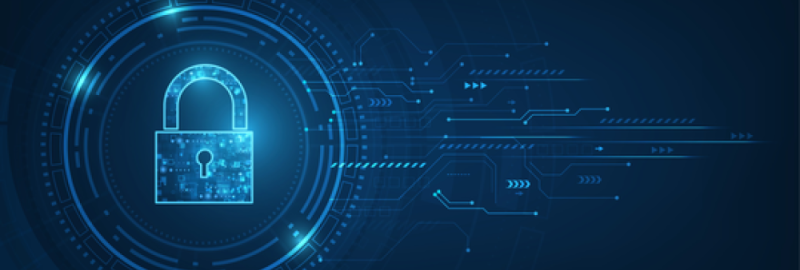
Artificial Intelligence is revolutionizing the business world. It enhances operational efficiency, provides valuable insights, and enables swift, data-driven decision-making. Through machine learning, predictive analytics, and automation, AI helps identify trends, forecast sales, and streamline supply chains, boosting productivity and performance. However, these advancements come with their own set of challenges.
Ransomware Threats Amplified by AI
In a conversation with Matt Hillary, Vice President of Security and CISO at Drata, we explored AI's impact on cybersecurity. Hillary highlighted that AI is exacerbating ransomware threats. Traditionally, ransomware attacks depend on social engineering tactics like phishing and exploiting vulnerabilities in systems such as VPN endpoints and exposed Remote Desktop Protocol (RDP) services. AI enables cybercriminals to craft highly convincing fraudulent messages, increasing the likelihood of user deception.
Cyber attackers are also using AI to enhance various aspects of their operations, including reconnaissance and coding, thereby improving their exploitation techniques. AI allows them to analyze large datasets efficiently, pinpointing vulnerabilities in an organization’s external systems and creating customized exploits, whether by taking advantage of known flaws or discovering new ones.
AI-Enhanced Defensive and Preventative Measures

Conversely, AI is also bolstering defensive and preventative cybersecurity measures. AI-driven systems can analyze extensive datasets to detect patterns indicative of potential cyber threats, such as malware, phishing attempts, and unusual network behavior. Large Language Models (LLMs) can identify indicators of compromise or other threats more quickly and accurately than traditional methods, enabling faster response and mitigation.
AI can observe and understand typical user and system activities within a network, identifying anomalies that might suggest a security breach. This method is especially useful for spotting insider threats and sophisticated attacks that traditional signature-based detection methods might miss.
Automating Governance and Compliance
AI tools have the potential to significantly enhance governance and compliance with evolving regulations and industry standards. By continuously monitoring systems and detecting anomalies, AI can respond to indicators of security incidents or misconfigurations that could result in non-compliance. These tools help organizations stay current and compliant by keeping pace with changing governance regulations in real-time.
Additionally, AI algorithms can analyze vast amounts of regulatory data, minimizing human error associated with manual efforts. This results in more accurate compliance assessments and reduces the likelihood of regulatory violations, providing a robust compliance framework.
Best Practices for Mitigating AI Threats
To mitigate evolving AI threats, organizations should adopt several practical best practices. Comprehensive education for cybersecurity teams is essential for effectively securing AI used by employees and AI integrated into existing platforms or systems. This education should encompass both the application and the underlying technology driving AI capabilities.
Organizations should deploy phishing-resistant authentication methods to safeguard against phishing attacks targeting authentication tokens used for accessing environments. Additionally, policies, training, and automated mechanisms should be established to equip team members with the knowledge to defend against social engineering attacks.
Strengthening the organization’s internet-facing perimeters and internal networks is crucial to reducing the effectiveness of such attacks, ensuring a more secure environment against AI-driven threats.
Ethical Considerations and Safety Measures

Ethical considerations are paramount when it comes to AI. Companies should establish governance structures and processes to oversee AI development, deployment, and usage. This includes appointing individuals or committees responsible for monitoring ethical compliance and ensuring alignment with organizational values. These governance structures should be thoroughly documented and understood across the organization.
Transparency is also vital. Organizations should document AI algorithms, data sources, and decision-making processes, ensuring that stakeholders comprehend how AI systems make decisions and their potential impacts on individuals and society. At Drata, responsible AI principles have been developed to promote robust, trusted, and ethical governance while maintaining strong security.
Key principles include privacy by design, which involves using anonymized datasets to protect privacy with strict access control and encryption protocols, along with synthetic data generation to simulate compliance scenarios. Fairness and inclusivity are promoted by eliminating inherent biases through detailed curation and continuous monitoring of models to ensure no unfair outcomes. Safety and reliability are ensured through rigorous testing and comprehensive human oversight, providing users with complete confidence in AI solutions.
The Future of AI Threats
The future presents both challenges and opportunities in the realm of AI threats. As AI becomes more accessible and powerful, malicious actors will inevitably exploit it to launch highly targeted, automated, and elusive cyberattacks across various domains. These attacks will evolve in real-time, enabling them to bypass traditional detection methods.
Moreover, the rise of AI-generated deep-fakes and misinformation poses significant threats to individuals, organizations, and the democratic process. Fake visuals, audio, and text are becoming increasingly sophisticated, making it challenging to distinguish between reality and fabrication.
Advanced AI-Driven Security Solutions
Despite the challenges, the future of advanced AI-driven security solutions is promising. AI will enhance cybersecurity resilience through proactive threat intelligence, predictive analytics, and adaptive security controls. By leveraging AI to anticipate and adapt to emerging threats, organizations can maintain a proactive stance against cyber criminals, mitigating the impact of attacks.
Effective third-party risk management is also crucial in addressing AI-powered vulnerabilities. Security teams need comprehensive tools for identifying, assessing, and continuously monitoring risks, integrating them with internal risk profiles. This holistic approach ensures a unified understanding of potential exposures across the entire organization, effectively managing third-party risks associated with AI.